Sewing Machine Cleaning and Oiling
Regular cleaning and oiling of your machine will keep it running in tip top shape for many years. There are just a few basic things to know about caring for your BERNINA sewing machine with the BERNINA hook, featured in our 7 and 5 Series machines.
Remove hardware
Before you start your machine cleaning, remove the needle, presser foot, stitch plate, and bobbin case from your machine. Removing these accessories will give you better visibility for cleaning and make access to certain hardware that should be maintained.
Clean the cutter
Many of our newer machines have an automated thread cutter. This will sometimes leave thread snip debris in the hook area and occasionally some thread gets stuck in the cutter. It is easy to clean this device.
Go into your Setup display and select “Machine settings.”
Then select the “Cleaning/Update” icon.
Now select the brush icon to clean the thread catcher.
Touch the link to move the thread catcher out. This will open the cutter up and leave it parked open so that you can remove threads caught in the cutting mechanism.
Once you have removed debris from the thread cutter, select the link on screen to move the thread catcher in. You can then take a soft brush to remove lint and clean the feed dog.
Oiling the Machine
Now you can turn your machine off to lubricate the hook. Be sure to use the oil that comes with your machine, as this is lighter oil specifically for this hook system.
Open up the hook area and wipe everything down with a cloth. Remove the hook and oil the two felt pads inside the hook with one drop on each.
Place one drop of oil into the hook race as shown in the illustration. Do NOT add oil to the red marked reservoir under the stitch plate, as this can lead to over-oiling the machine.
Once you have finished with oiling the hook and everything is back together, sew a few seams on a little on a scrap of fabric to absorb any excess oil.
General Tips:
- Microfiber cloths
Investing in a pack of microfiber cloths is great for any sewing studio. A quick dusting with this cloth is pretty much my daily practice for any machine that I have used. They also work great for dusting off work surfaces.
- Changing Needles
Changing Needles regularly and frequently is one of the least expensive ways you can keep your machine sewing a perfect stitch. Needles become dull, bent or burred with extended use. I recommend changing needles with each new project or about every 8-10 hours of sewing time.
- Regular Scheduled Service
Scheduling annual maintenance and servicing with a certified BERNINA technician is as important as taking your car to the mechanic. They are able to run diagnostic tests on the machine and update the software. In addition to that they open the machine up entirely and clean out any lint that has built up. Take any concerns or stitch samples with you to share with the sales staff and technician at this time.
- Keep it Covered
When you are not using your machine, it is always a good idea to keep the machine covered. This protects the machine from sunlight and dust, or your four-legged feline friends who might have a thread fetish.
What you might also like
60 comments on “Sewing Machine Cleaning and Oiling”
-
-
My dealer had a brush with a hole in it to hold the needle when changing it. He also had a tool to loosen and tighten the needle screw. I use them all the time. I don’t have a lot of strength in my fingers. Sure beats a pair of pliers.
-
I too have weak hands. Can you provide more details on brush and tool you spoke of and where to purchase it?
-
Hello berninarose, check with your BERNINA store to ask about purchasing brushes and tools to help keep your BERNINA clean.
-
-
-
You can save this as a PDF so you can refer back to it. I saved it in my Kindle app!
-
-
I really enjoy reading the tips you provide, whether it be on the machine itself or a how to tip.
Bernina is a great machine and have owned more than one for over
40 years. I use a 730 Arista 125 anniversary and have two sergers.Thanks….you do a great job for a great product.
A Bernina friend.
-
Thank you!
-
-
1st…..love, love, love my Bernina!
2nd…..yes, yes, yes to all cleaning tips & suggestions!
I have promised myself after each project I do just that. Also, yearly checkup at Bernina dealer just to make sure she remains in perfect running order. So pleased with Bernina you ARE the BEST!-
Customers like you are THE BEST!
-
-
Articles like this would be a lot nicer if we could download them as a pdf.. If that is available for this article, I cannot find it.
-
Hello grammybkm, our WeAllSew blog content is posted in an open format. If you wish to print the post, you can easily print your tutorials from the WeAllSew blog. If you attempt to print directly from the screen a pdf will be generated for your convenience. Please give it a try.
-
No, it doesn;t work as you say. Could not get a pdf.
-
Hi. If you scroll to the bottom of the article, after the last photo of a Bernina with its protective case on, there is a little red button that says PRINT. I clicked on that and sure enough, my print screen came up and had I clicked Print, I would have gotten a 26 page document. Rats! Not a PDF. I then went to the upper right corner of my browser where the 3 horizontal lines are, clicked on it, and went to the Option “save page as”. A screen came up with the option to Save the page under Downloads. My little download clock started (located a few icons to the left of the horizontal lines) and the Blog Article was saved to downloads. I hope this helps you out! Linda
-
-
-
-
I have a 590. My dealer and the machine documentation say to oil the race as well. This is not mentioned here. Is this a revised procedure
-
Yes, it is mentioned above. It is in the section on oiling your machine.
“Place one drop of oil into the hook race as shown in the illustration.” -
The hook sits inside the race, so you can put the oil on the hook or on the race inside the machine. I prefer to put it on the race inside the machine, as it seems less messy to me.
-
-
I have a 560 and I had it serviced recently, and since then when I use my thread cutter the needle unthreads. If I use it i have to rethread my machine, so I do not use it. Any ideas?
-
Bring it back to the servicing dealer. Perhaps something is out of adjustment and they should , as good business relations take care of that for you. I had a similar problem with a different brand of machine. .. trouble after servicing and I did return it to the dealer and it was made right.
-
Mine does the same thing. It’s so frustrating.
Also, the link for the thread cutter does nothing on my machine.
-
-
My dealer recommended to add four drops of oil to the red reserve under the switch plate each time the other two areas are oiled. That’s now not correct? I specifically remember this from our Bernina classes.
-
Me too. When i took the class that is what they said.
Has policy changed? -
I remember it, too, from my classes.
-
-
The manual for my 765 indicates is SHOULD add oil to the reservoir under the stitch plate. The class I took from my dealer also told me to add oil to the reservoir. This article says DO NOT add oil to the reservoir. Which is correct?
-
hello–sorry to miss your comment. This blog shows the recommended way to oil the machines. It was discovered that oiling in the reservoir would often lead to over-oiling the machine and the oil would show up in the thread–most notably white thread (it would sew looking dirty- grey in color). So this amended version of oiling was proposed.
-
-
This is great information for the 590, but I would like to see what should be done for the 880 Plus ?
-
Good idea…it is similar, but the oiling part is a little bit different. Maybe we can add a featured post on that machine in the future. Most all of our newer machines have this hook system, but I believe we have 4 different style hook systems in our different models throughout the years.
-
-
I have a 770 and it is a dream machine. When learning my machine, somewhere it stated to no longer fill the “oil depot” under the stitch plate. Is this correct? I do clean the machine regularly and oil the hook as instructed. Love the Bernina video tutorials.
-
Hi madmail! In the past, BERNINA has instructed to oil at the reservoir under the stitch plate, indicated by the red dot. In practice, we have learned this often leads to over-oiling and can result in staining fabric and discolored thread. To remedy this, our suggestion is as stated above, simply oil the hook/race as demonstrated here. I’m glad to hear you enjoy the tutorials and we hope this tip serves you well!
-
-
Still waiting to hear about putting oil in the red reservoir under the switch plate (comment made January 25). Please respond. Thank you.
-
Hi sellarl! In the past, BERNINA has instructed to oil at the reservoir under the stitch plate, indicated by the red dot. In practice, we have learned this often leads to over-oiling and can result in staining fabric and discolored thread. To remedy this, our suggestion is as stated above, simply oil the hook/race as demonstrated here. We hope this tip serves you well!
-
-
I am also waiting for an explanation of why we should not oil the red dot
-
Hi azconnie! In the past, BERNINA has instructed to oil at the reservoir under the stitch plate, indicated by the red dot. In practice, we have learned this often leads to over-oiling and can result in staining fabric and discolored thread. To remedy this, our suggestion is as stated above, simply oil the hook/race as demonstrated here. We hope this tip serves you well!
-
-
why is the red hole for oil under the stitch plate if not for oiling?
-
Sometimes engineers come up with a design idea that sounds great in the lab, but doesn’t work so great once a product is out in the field. The red hole under the stitch plate was supposed to be an easier, indirect route to oiling the hook, easier to get to (especially if your machine is sitting recessed in a cabinet) and easier to see where to place the oil. However, in real world applications it turned out to be not such a great idea because customers were putting way too much oil in that hole and then the machines “spit up” the extra oil, dirtying our projects. If you put one drop of oil directly on your hook race every 6-8 hours of sewing, then the oil goes right where it needs to go with no chance of it collecting where it doesn’t belong and ruining what you’re working on. Theoretically, that red hole SHOULD work to keep your hook lubricated, as long as you don’t put oil there too frequently and you never put too much oil. But it is really discouraging to have a project ruined by a dirty oil stain midway through, so most of us would rather follow the current recommendation to do just one drop of oil on the hook race and never put oil down that red hole at all. Better to be safe than sorry!
-
I think part of the problem with the red oil port is that it is difficult to do accurately if one is right-handed. I found it awkward and switched to my left hand instead and had better results. Wonder if the designing engineer was a leftie. Nevertheless, I appreciate Bernina’s dedication to continuous learning and adjusting protocols as called for.
-
-
-
I have a B Bernina 750QE -do the cleaning instructions above apply to it? I believe it has a B9 Hook -not a CB
-
Hi chocho- Yes, this is the cleaning instructions for the B750QE. The B9 hook is now more commonly referred to as the BERNINA hook. Hope the tutorial is helpful.
-
-
How do you oil the Bernina 153?
-
How do you oil the Bernina 153? Thanks.
-
The information works pretty well for the 153 model as well. You have a different bobbin and hook–but it will come out of the machine the same way and should be oiled in the same place (along the race). Your hook will NOT have the little felt pads inside the bobbin case though. And you will want to use the oil that came with your machine. The newer machines take a slightly lighter oil-so it is important to know. If in doubt, your local dealer should be able to get you the correct oil if you tell them the machine model. Hope that helps! and happy clean sewing.
-
-
I’ve been maintaining my 830 Record for ? 40 years, (a hand me down!) and it is still my go to machine for most everything I do. Is there any change in the cleaning/oiling process after all this time?
-
Good habits lead to good results, right?! In general, the cleaning and oiling practice and recommendations are pretty much the same. Newer machines have a lot more electronic and circuit board components inside–so it is really important to take them in for regular service by a technician. Also-the oil for newer machines is somewhat lighter than that which you are used to using on the older 830, but otherwise what you know and practice is still what we recommend today.
-
Your comments about the red dot spot that my manual tells me to oil- should I stop doing that as you have suggested for the newer machines? I obviously don’t have any of the original oil left, so using a general sewing machine oil for my machines. More frequent oiling then?
-
No- on the older machines please still follow the directions for oiling in the manual. Sorry if I confused the matter. I would oil the same amount that you have been doing–I am sure you have developed a good sense knowing when your machine is needing it.Best Wishes
-
-
-
-
I love my BERNINA. Took a long time to afford it, but so worth the wait! I have an older machine as well, but I oil and maintain. This year has been difficult with so many shops closed for the virus, so still have my yearly checkup to go!
-
I have a Bernette B38. I was told NOT to oil the machine. Is that true?
-
This post is specifically pertaining the to BERNINA Bobbin System that is in the current 4, 5, and 7 Series BERNINA machines. The bernette machines have a different bobbin system and you should follow maintenance directions provided in the user manual or given by your dealer. Page 67 of the user manual for the bernette 38 states that the machine does not require oiling.
-
-
I love my Bernini! It has helped me make so many beautiful projects. I have an Artista 170 and the manual says it doesn’t need oiling. Has this advice been updated? Do I really not need to oil it? I can’t made it to the dealer because of the pandemic.
-
Please follow the machine manual recommendations for your model number. There were some models that came with a version of hook that did not require oiling. Sometimes dealer’s technicians will recommend swapping these hooks for new ones and they will be able to advise you on the oiling needs, in that case. I know it is really hard to get into dealerships right now, but the general practice of just brushing out the lint will keep your machine operating well in most cases. Oiling gets a little more nuanced from model to model. Thanks for your BERNINA love and enthusiasm!
-
-
My thread cutter will cut the top thread but not the bobbin thread. I have cleaned it numerous times. What should I do now? My bernina dealer is in a different state and due to the pandemic we are not welcome to cross the border!
-
I’m so sorry to hear about your thread cutter issue. Sometimes they get jammed or broken and unfortunately, it takes a technician to repair them. If you have cleaned and looked for a jam- it most likely needs a certified tech to repair it. Remember- there is a manual thread cutter on the side of almost every modern BERNINA machine model, in addition to the automatic thread cutter button. I would propose using the manual method for thread cutting until you can get to a dealership and have the thread cutter repaired. I know times are challenging right now, and we certainly appreciate your patience and due diligence to your machine service properly.
-
-
My dealer has closed her quilt store and am going to have to go to Bernina dealer 60 miles away. Calico Patch is doing business online with her patterns and etc. I need Bernina oil and etc.
-
I love my Bernina! I have always wanted one and finally got it. My last machine died about 4 years ago Andi haven’t been able to get a new one since. A very wonderful man I took care of for 12 years left me his life insurance and it let me buy this machine. It seems like a dream! I was a little intimidated at first but the users manual and this blog made it easy to learn how to run. I thank you Bernina for a CT wonderful machine and look forward to years of sewing all kinds of projects!??
-
So happy for you to have a new BERNINA to love.
-
-
570 Quilter’s Edition:
I oil my machine no less than once a week. I know how important this is. I often check to make sure the pads are moist and if not, oil them.My question is oiling the hook race. There doesn’t seem to be any clear place to put the drop of oil. I’ve been just putting the tip of the oil tube into any open area (and the whole circular area is open.)
It seems anywhere is ok, but I can’t visualize the oil going where it’s supposed to.
Can you clarify? Thanks so much.
-
Thanks for the question. The main idea is to get the oil in around the area that moves- so it doesn’t really matter at which point you place the oil as this hook will move around on all sides. I typically turn my handwheel through a few rotations to distribute the oil around more evenly–but this will also happen when you start to sew.
-
-
I am a new Bernina owner with a 570 QE. I cleaned and oiled my hook for the second time as the video shows. The hook went back with the magnet attaching it in place; however, when I put the bobbin case back the case rotated so the clip on the bobbin case was at 6 o’clock not 3 o’clock as shown. I took the hook and case out again and it still happened when I put the case back. I checked a sample stitch and it stitched fine. After the test switch I opened the bobbin cover to check the bobbin and the bobbin case was orientated the right way. Why did this happen?
Leave a Reply
You must be logged in to post a comment.
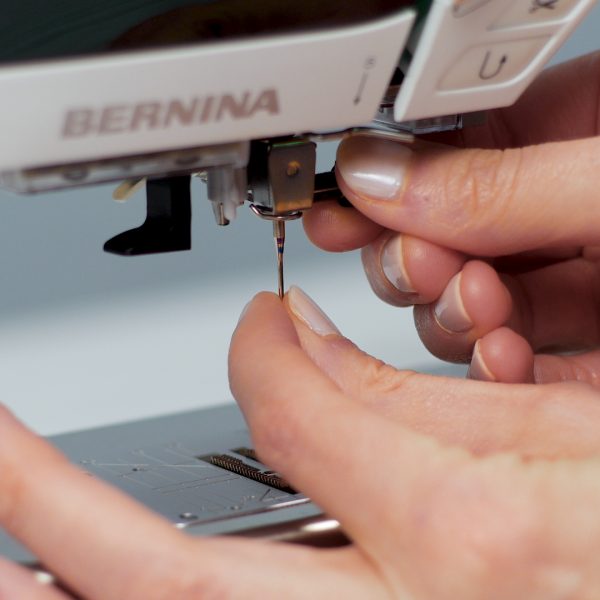
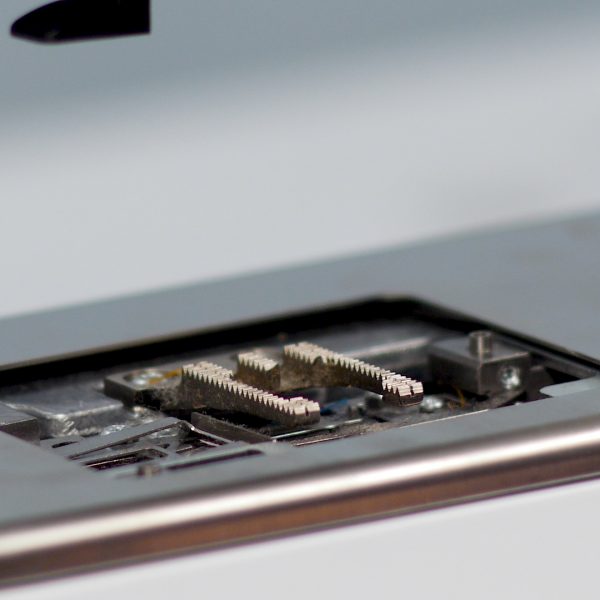
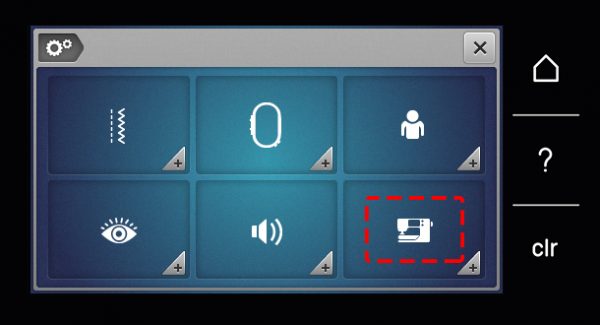
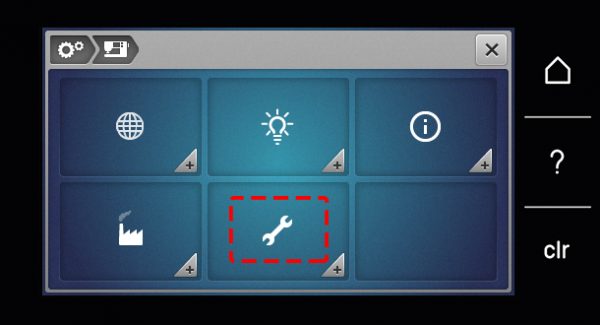
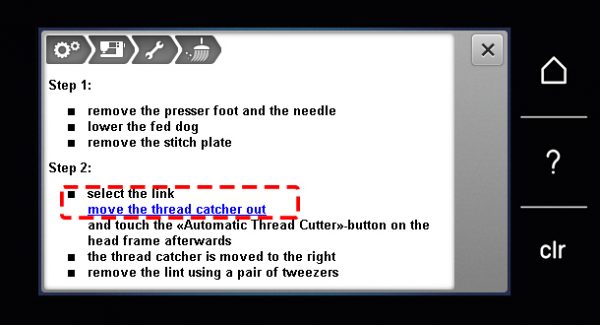
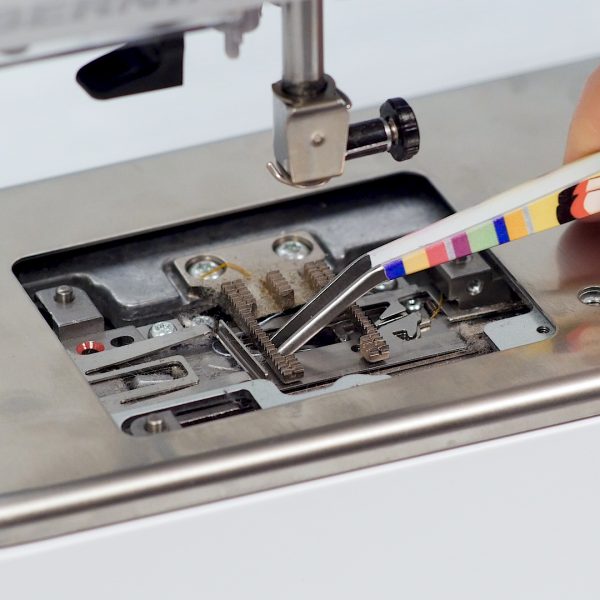
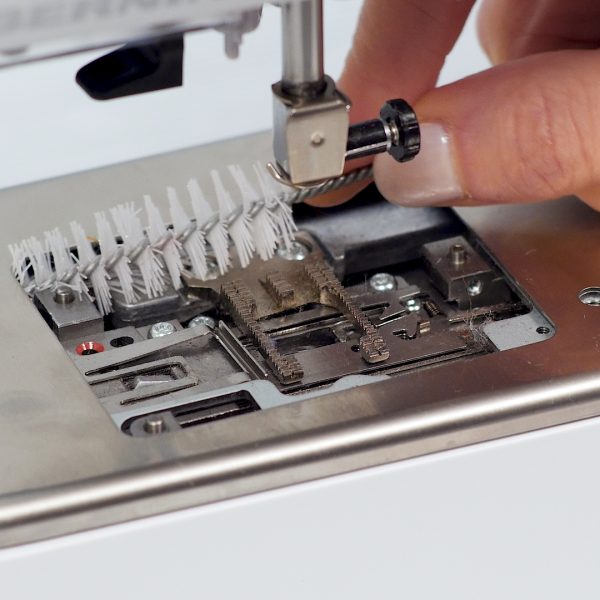
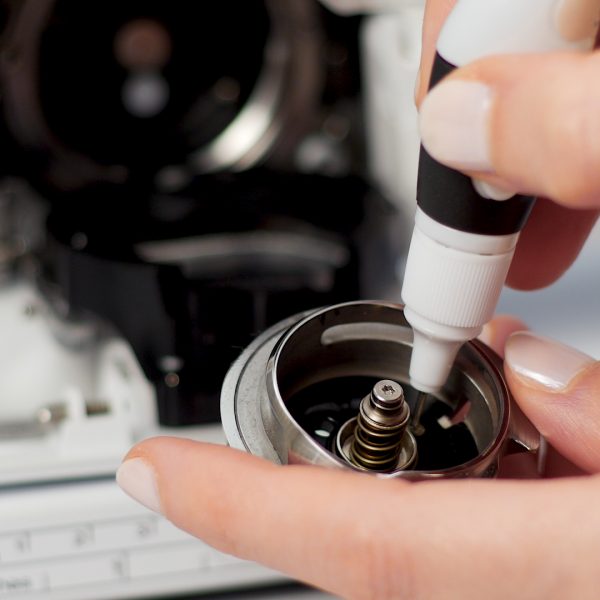
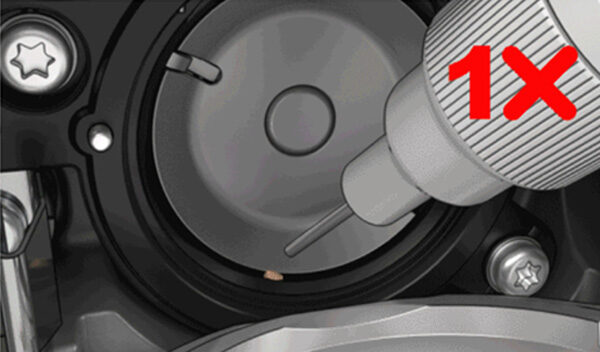
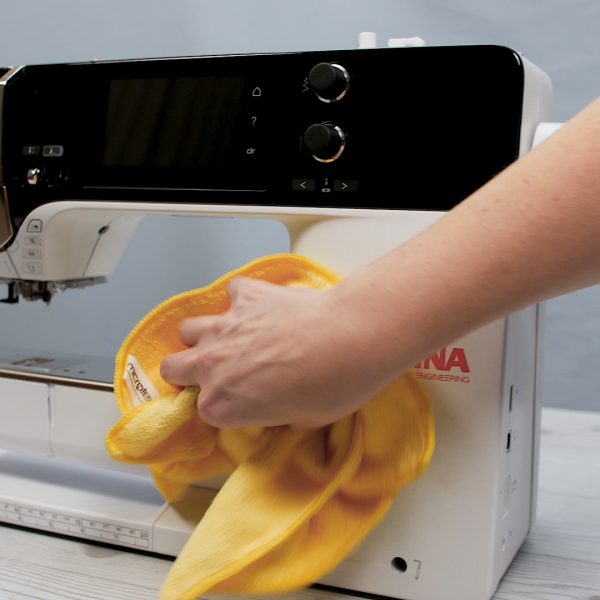
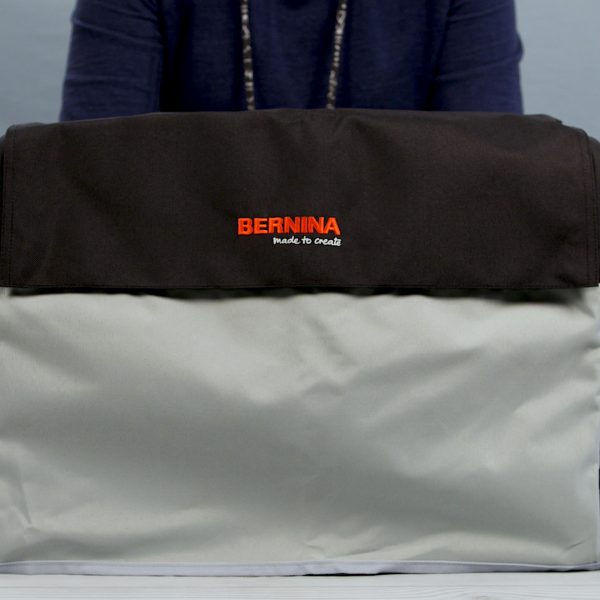
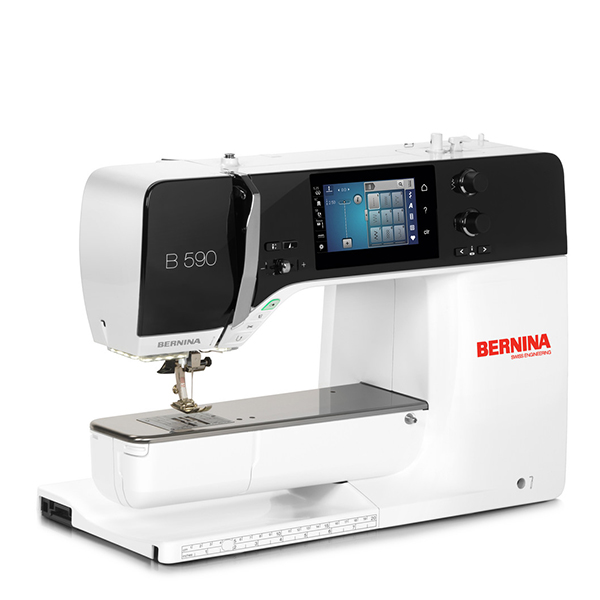
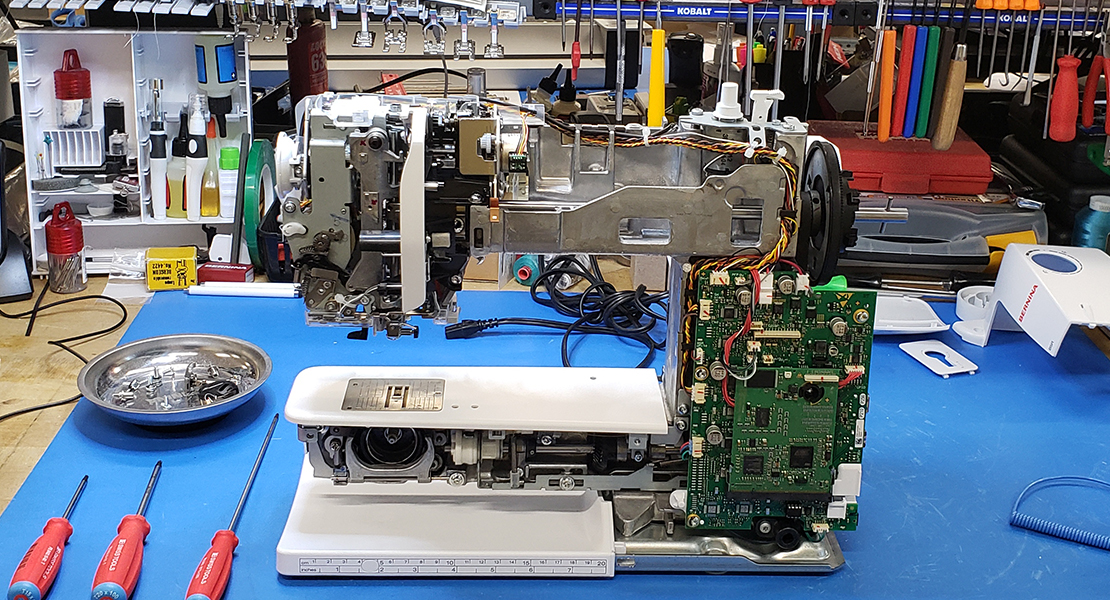
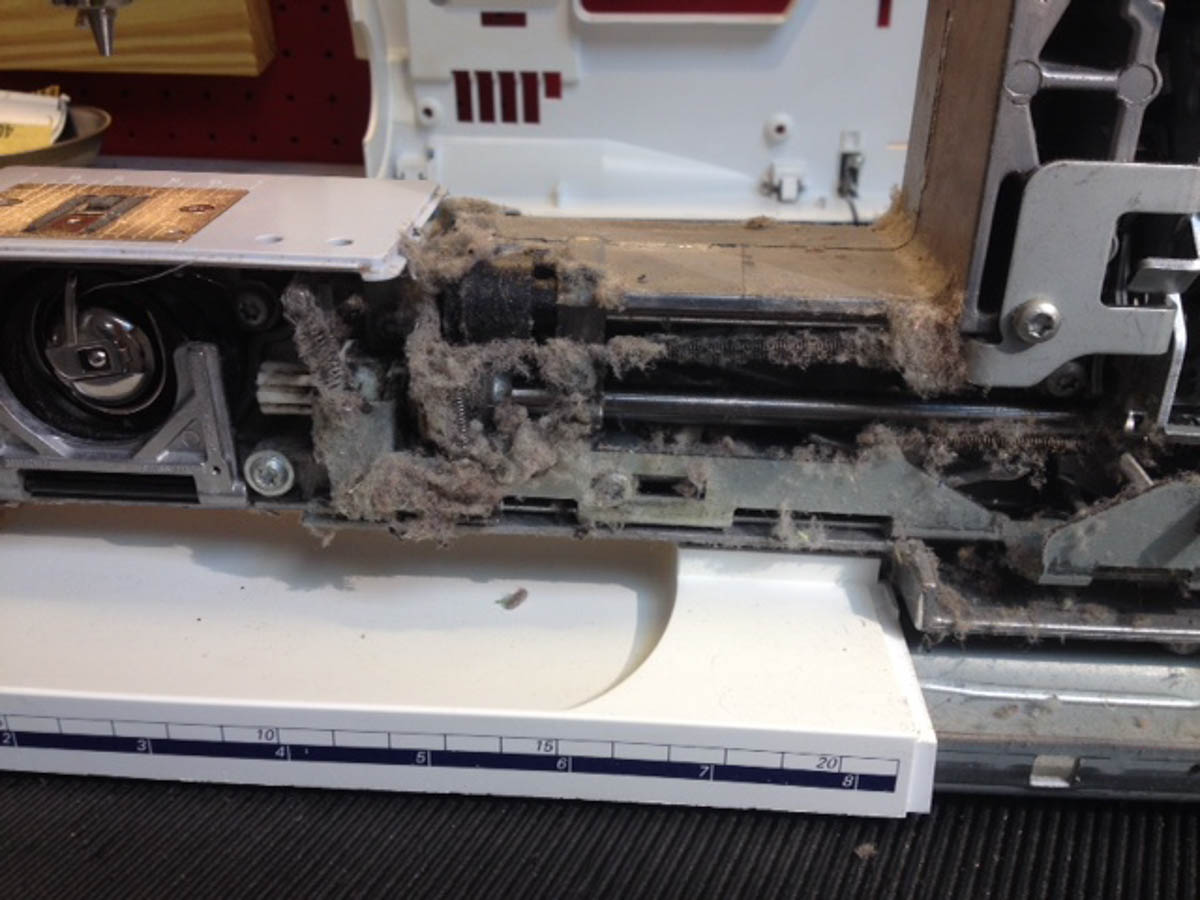
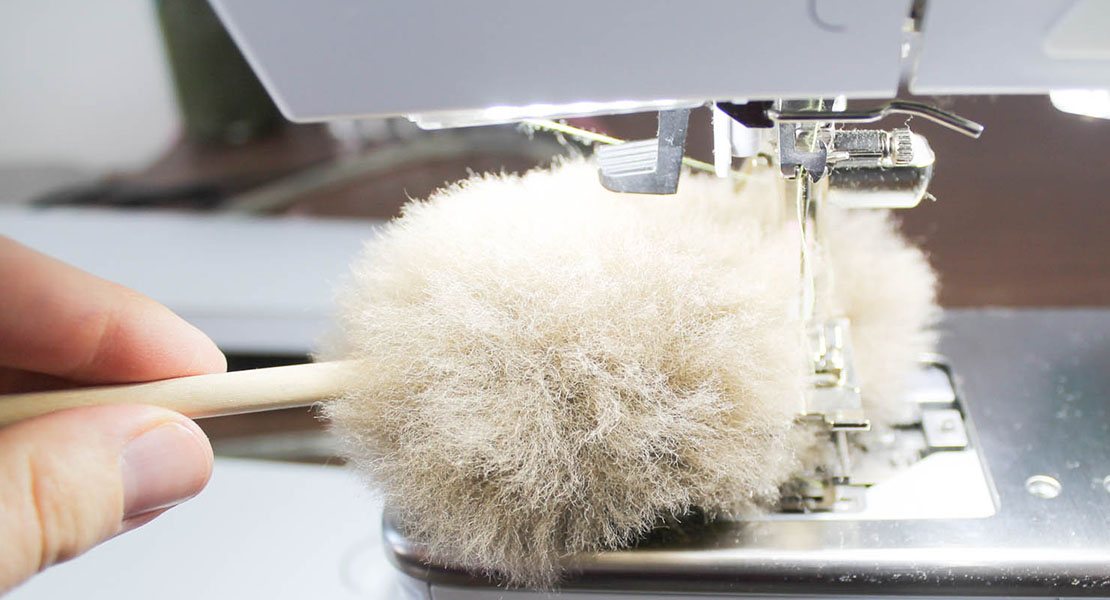
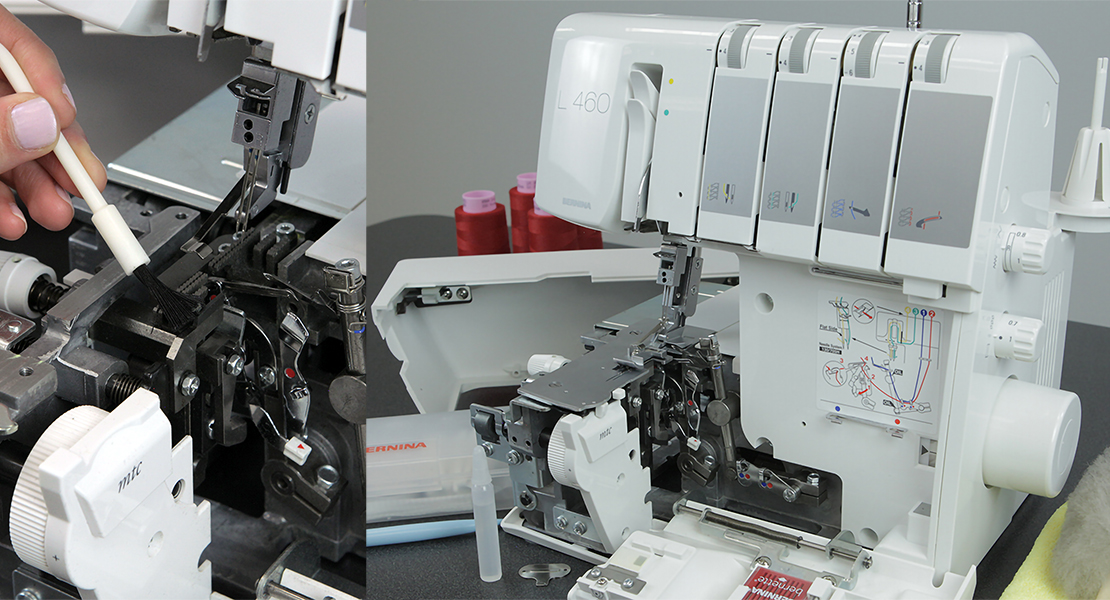
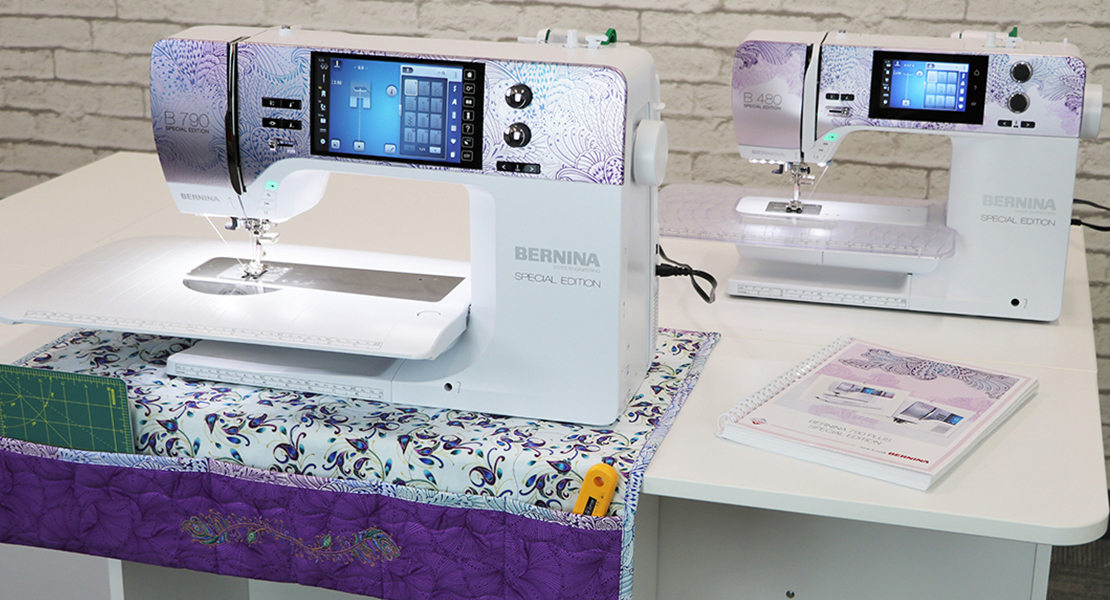
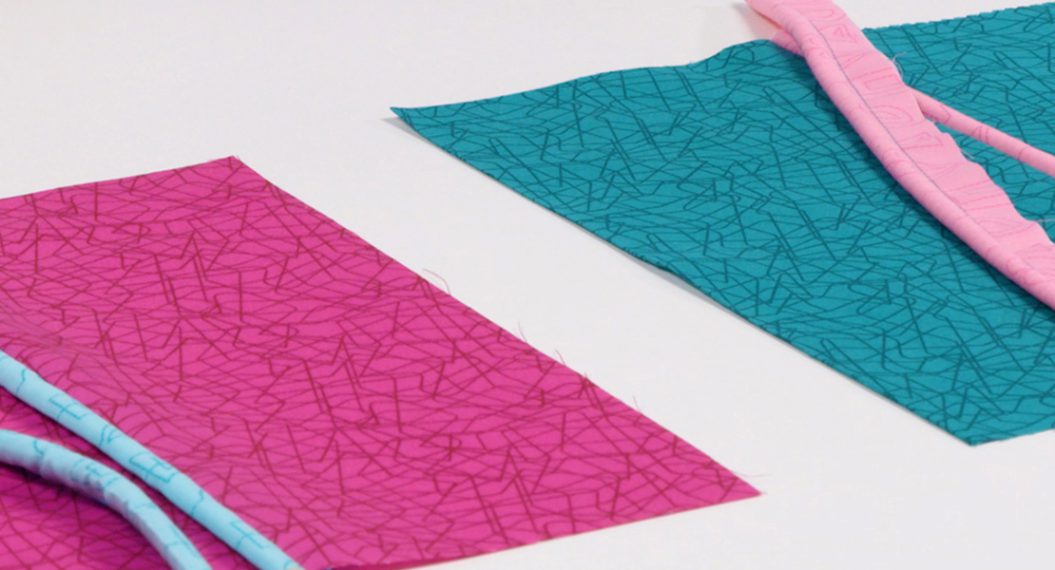
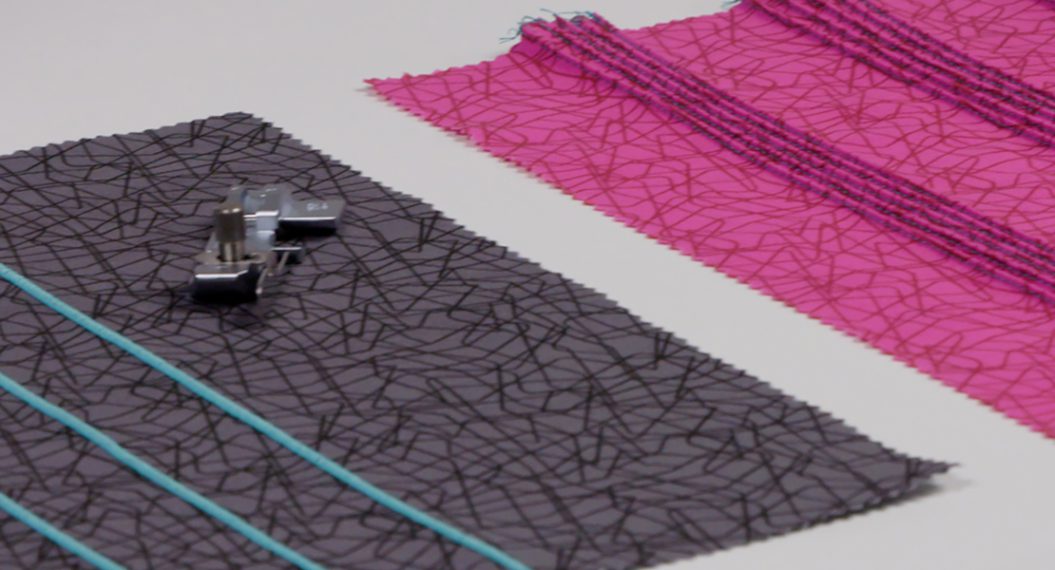
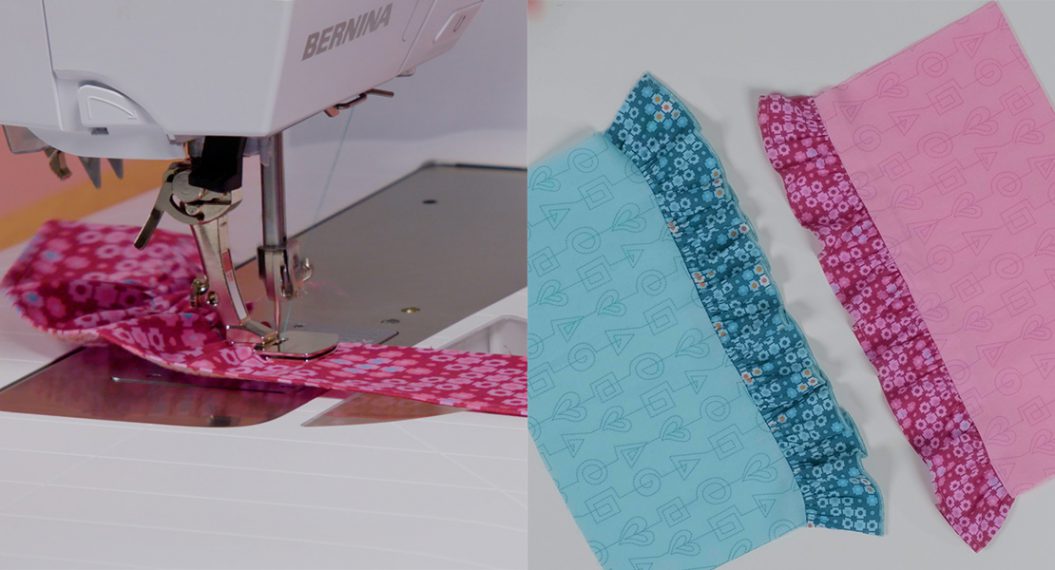
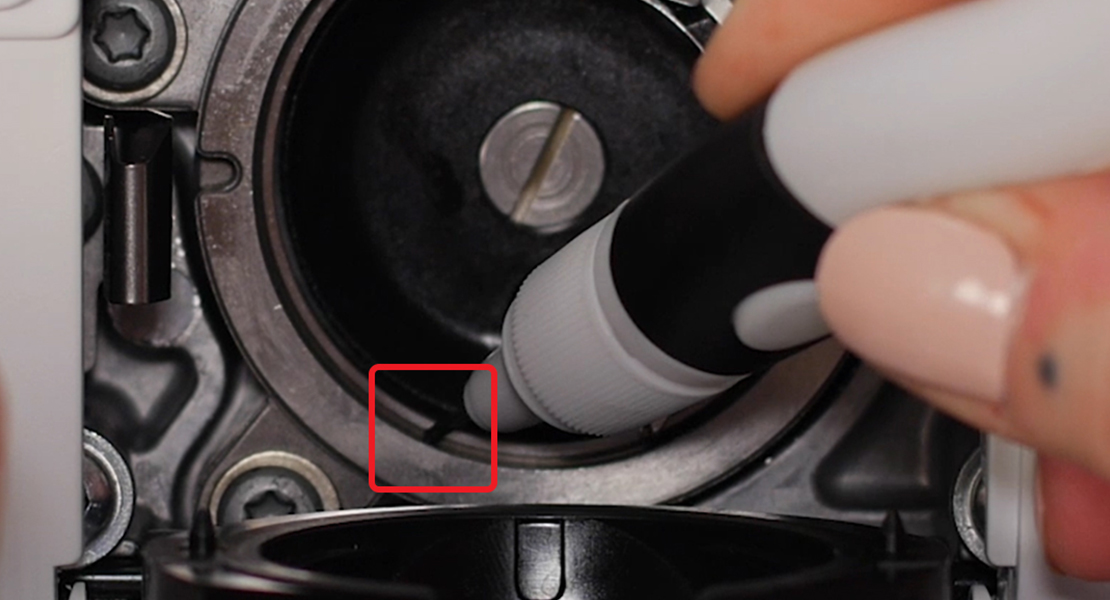
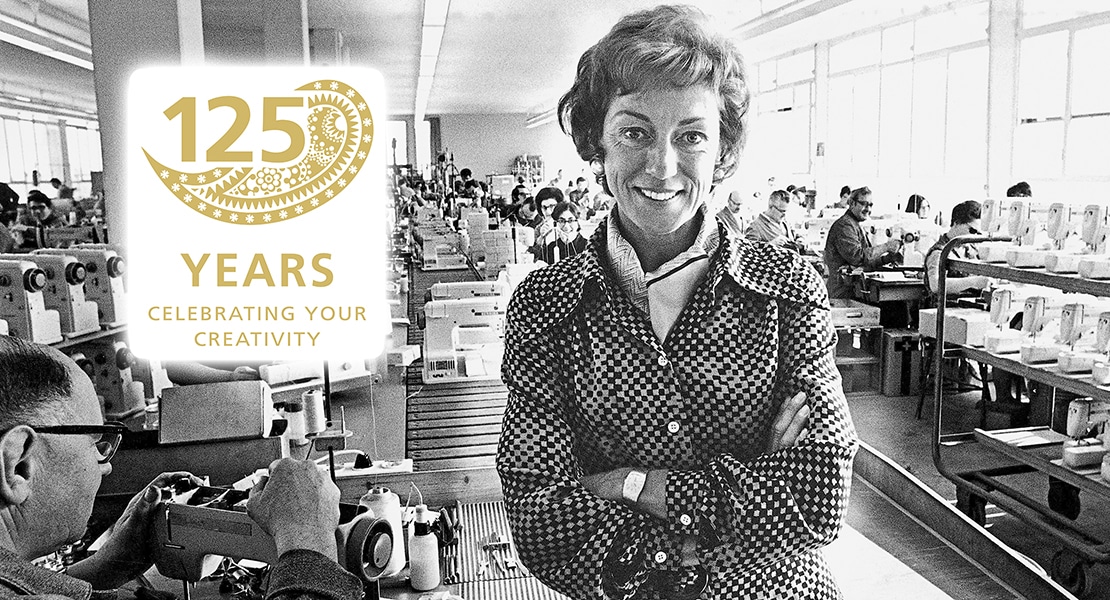
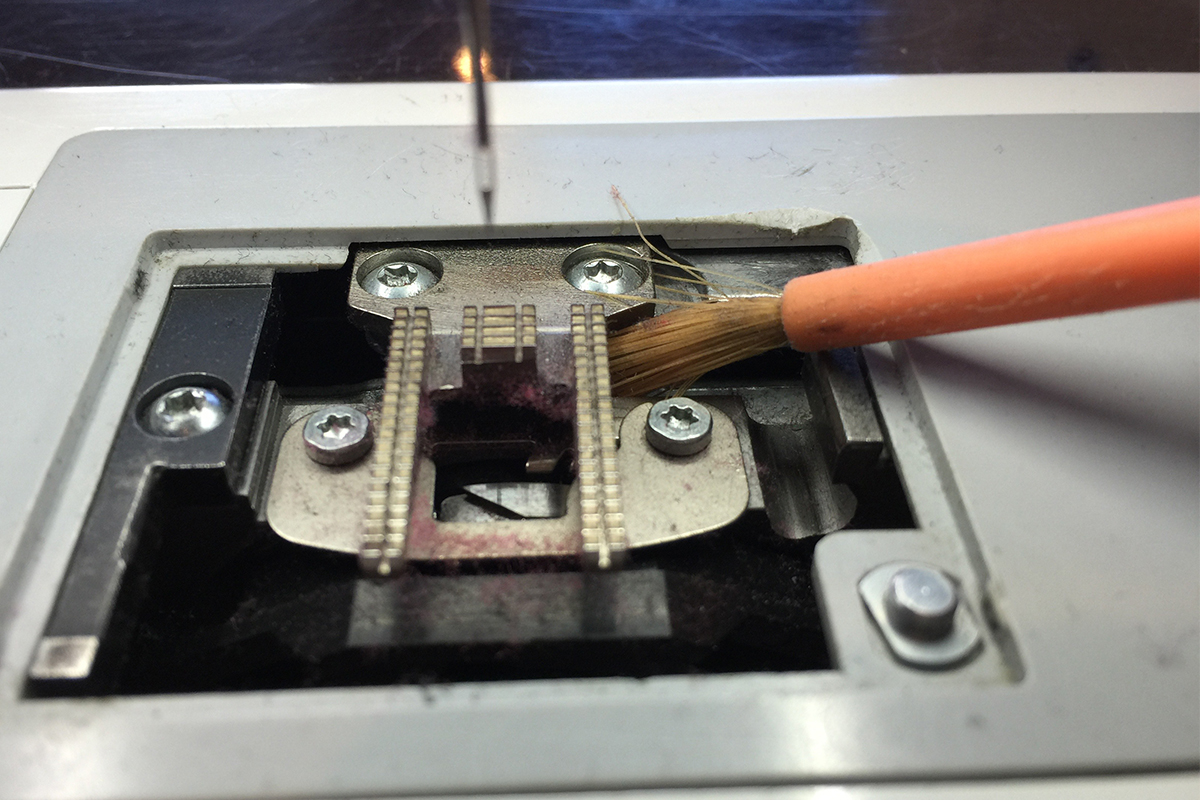
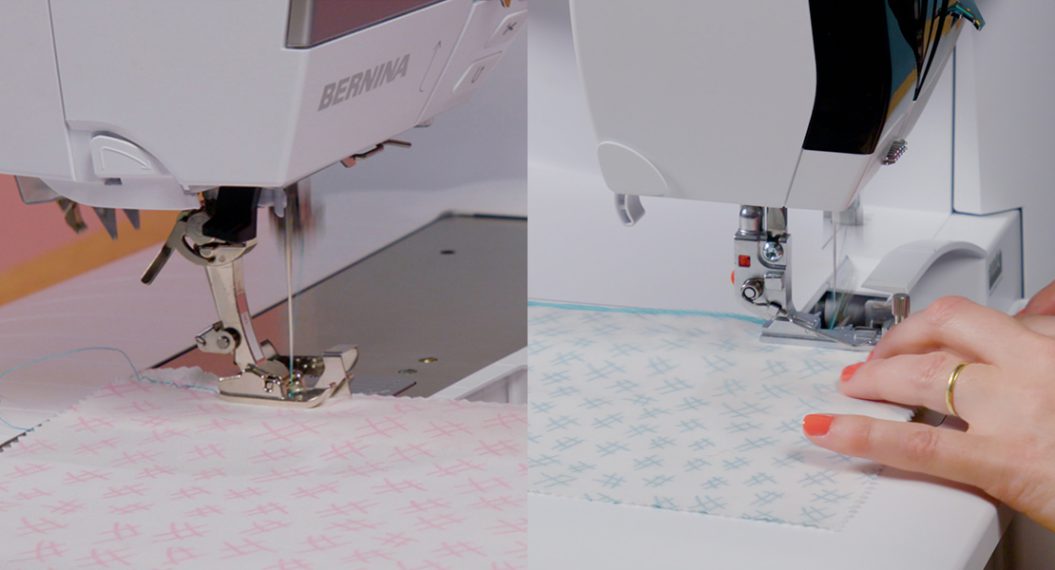
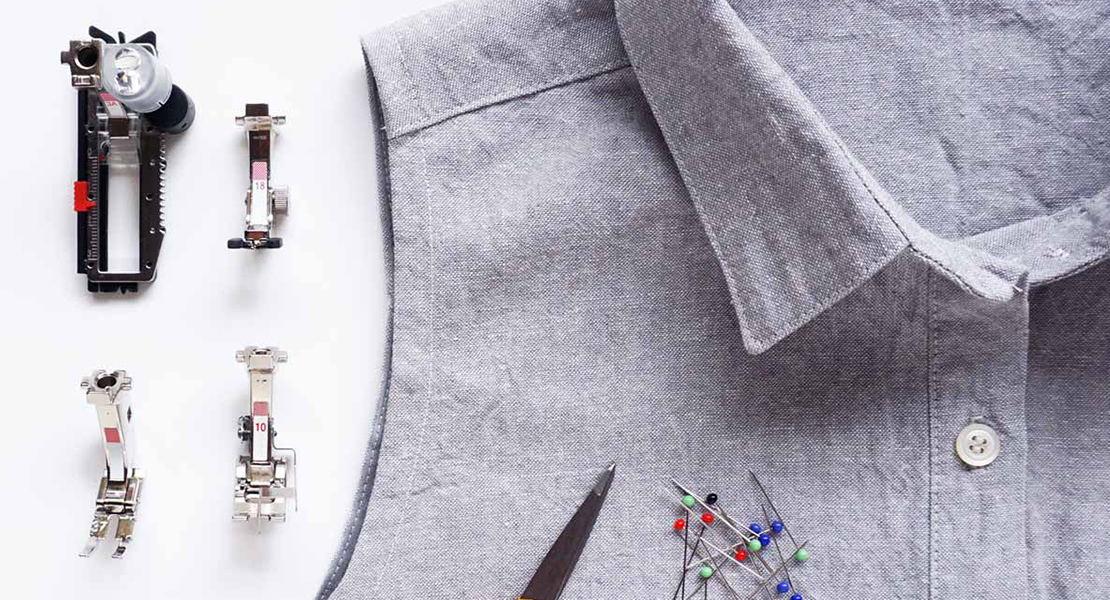
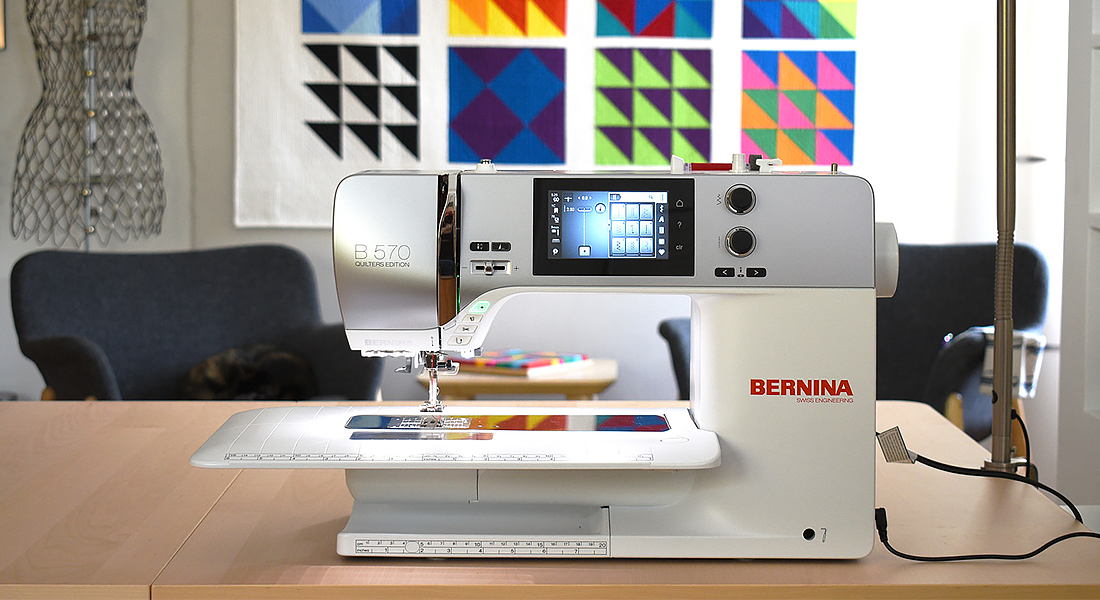

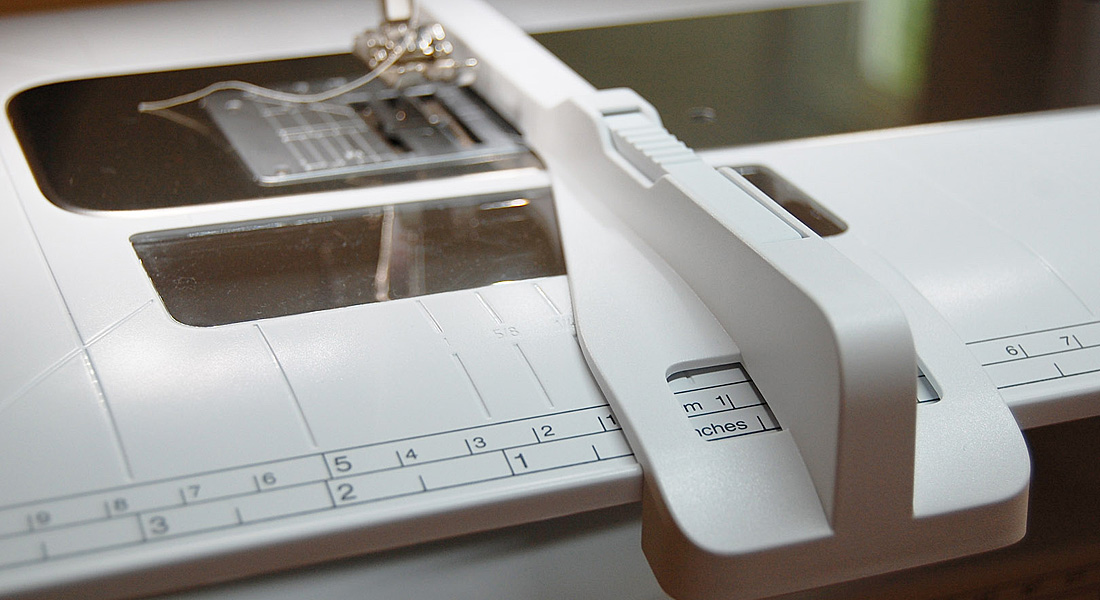
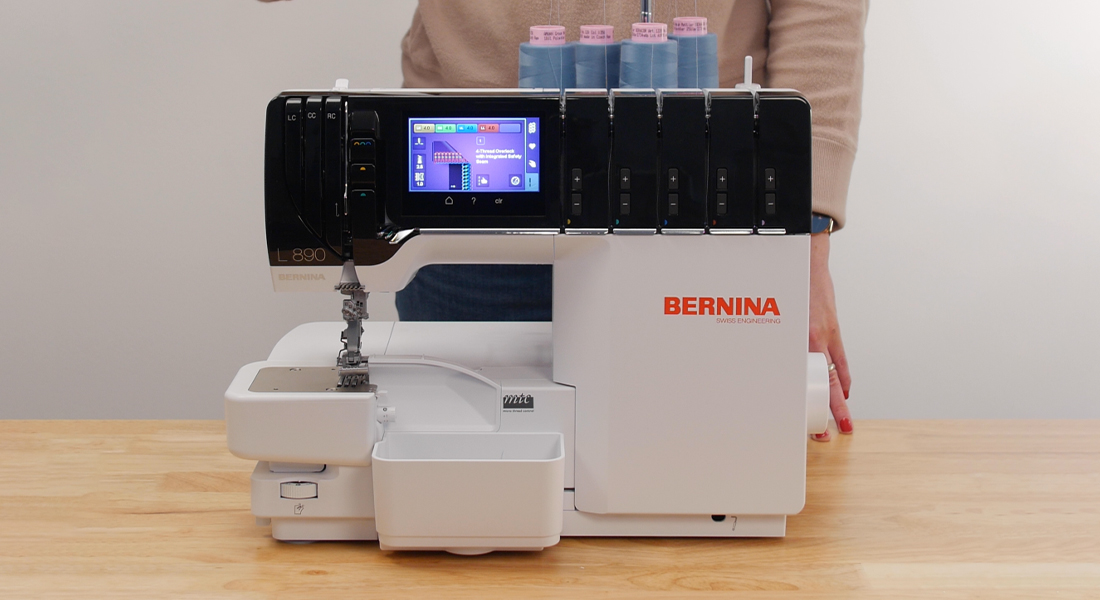
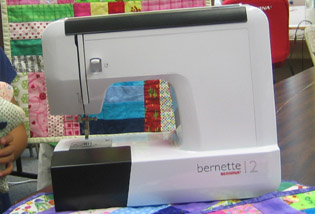
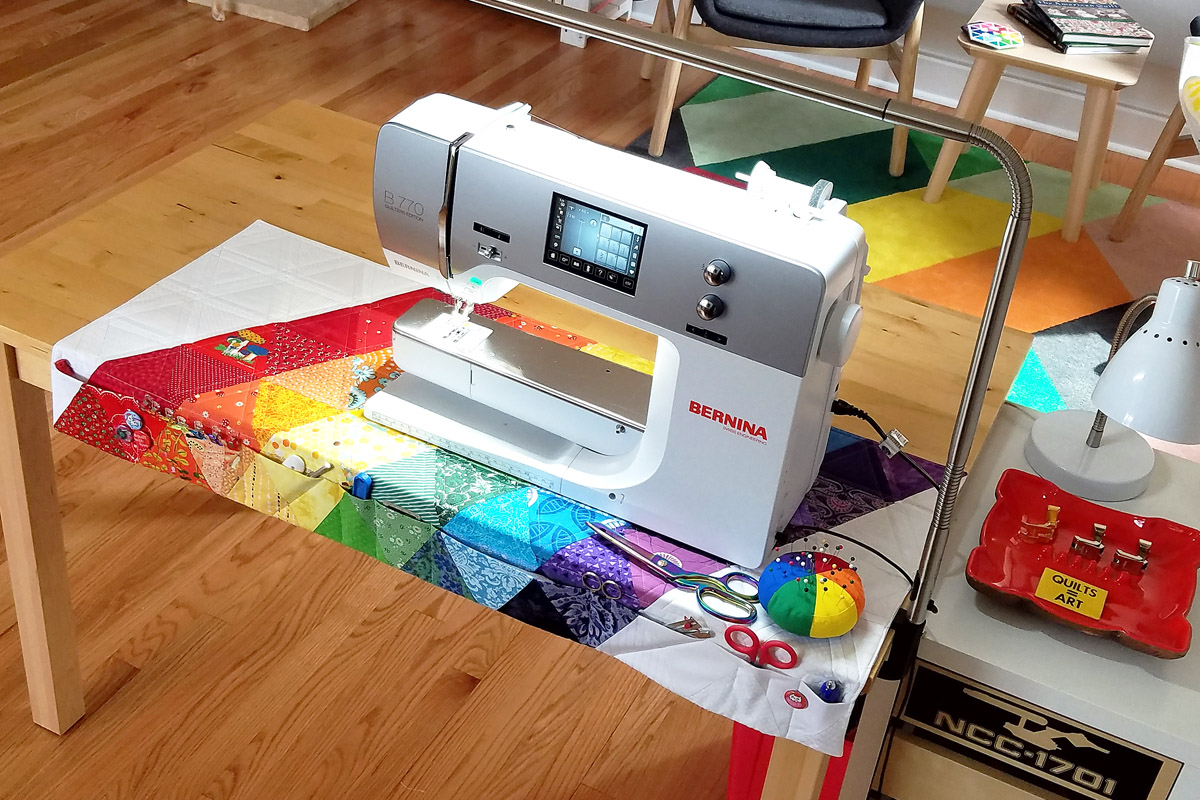
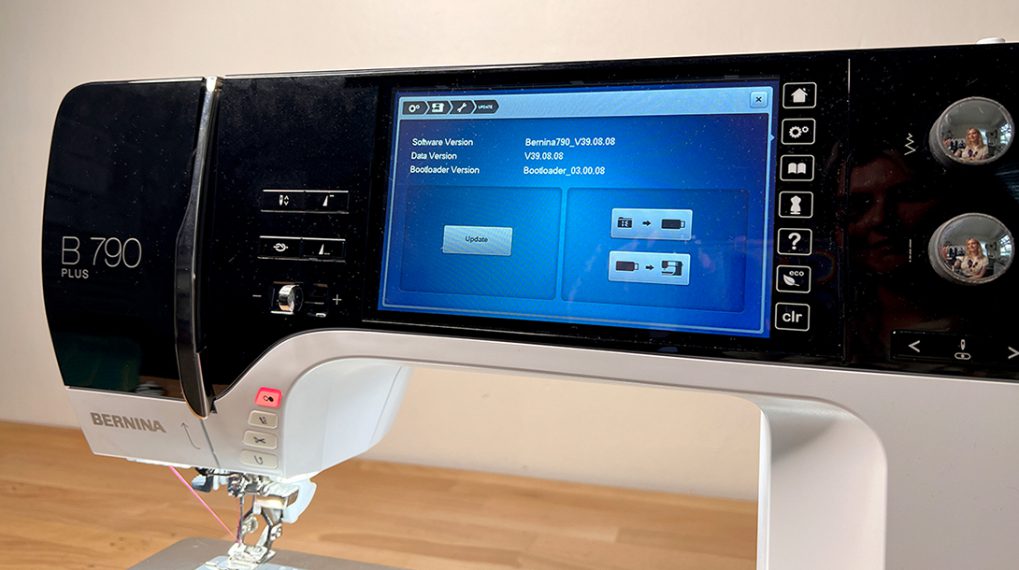

I liked the pictures of how to get to thread cleaner. I always forget where it is. Since they replaced the thread cutter last year I don’t have that problem very often. I took a picture of the pictures showing where to find that on my phone so I do have to spend an hour looking for it. I’m going to looks for a brush like yours. The ones I have don’t do the job.